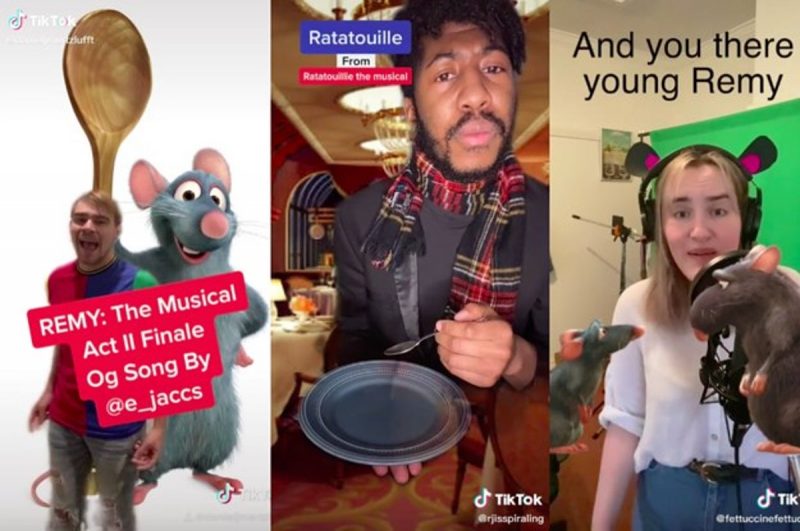This question is one of many that followed a performance of Victors of Character by Allison Manville Metz from an elementary school audience member. This play follows the friendship between President Gerald R. Ford and the Honorable Willis Ward during their days as University of Michigan football players. The range of questions from the audience that day made statements about our country’s progress – or lack thereof – in the areas of diversity, inclusion, and discrimination. These concepts are sometimes difficult to define, let alone accomplish, but if we listen to young audience members’ responses we can hear that these plays influence them to examine such complex concepts – a reminder just how imperative this work is. I took a peek at the 2018/19 TYA season from companies across the country and saw a number of ways organizations in our field are creating a culture that addresses the challenging need for stronger representation of diverse bodies, voices, and stories on stage.
Adopting a theme can sometimes be considered stifling when in search of interesting, meaningful, or challenging works but these parameters can also generate opportunities to create space in a season for pieces that wouldn’t traditionally be included. Adventure Stage Chicago’s 2018/19 season of the theme “Hunger” represents many people and experiences. The season includes A Stranger and the Shadow (a working title), which will use both actors and life-sized puppets to explore youth activism. How we represent young people on stage carries important messages. It is imperative that we acknowledge age as a deciding factor in who is allowed a voice and choice in important conversations in this country. On the other end of the spectrum, nostalgia can be a powerful component of an adult’s view of childhood and notably often is how information, art, or ideas get passed down from generation to generation. MainStreet Theatre Company in Rancho Cucamonga, CA will produce The Snowy Day, and Other Books, a dance performance based on books by Ezra Jack Keats. Lula Washington Dance Theatre, an African American contemporary dance company, is showing how a classic can be reimagined to bring a diverse story to life over and over again.
Representation is not always reflected by the way someone looks but often through language and the use of bilingual theatre, such as Magik Theatre in San Antonio, TX where you can see Mariachi Girl by Roxanne Schroeder-Arce. This season Magik Theatre says farewell to its Managing Artistic Director Frances Limoncelli, but before her departure, she ensured a season just as diverse and inclusive as the last. Limoncelli points out that dual language shows are extremely important to our field but especially in San Antonio due to the demographics of the community, which she reports is approximately 72% Latinx. She says, “I’m also proud of the fact that 58% of the actors on the Magik stage during my tenure were people of color. It’s essential for children to have role models that look like them so they can see themselves doing things they might not even imagine otherwise.” Playwright Jose Casas often weaves Spanish into his plays, from la ofrenda to 14. Across Casas’ work, audiences can expect that there will be a bilingual character, and despite having the ability to understand Spanish or not, it would be difficult to argue that the representation of this language doesn’t add to the story on various levels. 14, inspired by the deaths of immigrants attempting to cross the border into the US, is not only moving but contemporaneous and being produced at Borough of Manhattan Community College – the first Latinx play produced at this school. Through the production of plays like 14 and Mariachi Girl, we are cultivating a culture that includes an opportunity for us all to experience and identify with other cultures.
This recent world premiere of Last Stop on Market Street, adapted by Cheryl L. West at Chicago Children’s Theatre and co-commissioned with Children’s Theatre Company (CTC) of Minneapolis, includes a character who is differently abled. Garnering interest and recognition across the TYA community, this play is being produced for a second season at CTC in September while another adaptation comes to life at the Children’s Theatre of Charlotte in Charlotte, NC in November. Breon Arzell, an actor from the Chicago Children’s Theatre production said, “[The play] features a blind character in such a beautiful way. We had an accessible performance and it really moved the parents to see how he was depicted in the show. One mother was crying because she said she’s never seen such a joyous portrayal of a blind character on stage.” Young people need to experience high-quality stories on stage that include people who look like them while also experiencing the beauty and importance of worlds and people that they wouldn’t otherwise encounter.
As we celebrate the ways in which we are pursuing a more inclusive field, being mindful and intentional about representation, remember that strategy alone does not create a culture. Whether taking small steps or huge leaps, do not allow yourself to become disillusioned or begin to believe that doing one or more of these things means that your work is done. Hesitate when it comes to creating a “diversity slot” in your season because slots or predetermined places for people will minimize the true importance of their presence and their voice. Challenge yourself to look at the demographics of your leadership, your performers, and your teaching artists, and then compare that to the demographics of your surrounding community. Are you representing your community in a realistic way or working to represent varying stories through the use of beautiful bilingualism? It is up to us to avoid promoting tokenism and to break down structures that support that ideology and practice. Why can’t Pinkalicious be African American, Latina, wear a hijab, or walk with crutches? In the current TYA landscape, we say we care about diversity and inclusion, and have goals of being respectful – by intentionally providing and engaging in opportunities for diversity – and truthful – by not forcing diversity just to say we did it or using it in such ways that change the integrity of the story or further perpetuate stereotype. But in what ways will you drive the goal? As my Grandma used to say, “You can show me betta than you can tell me!”



